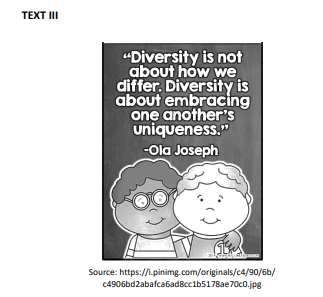Questões de Concurso
Para prefeitura de macaé - rj
Foram encontradas 1.445 questões
Resolva questões gratuitamente!
Junte-se a mais de 4 milhões de concurseiros!
I. Linguists are aware that language may convey prejudice.
II. Speakers may not realize their language choices might conceal implicit biases.
III. Stanford researchers have found out that boys actually outshine girls at math.
Choose the correct answer:
Analise a seguinte tirinha em quadrinhos da MAFALDA.

Sobre o processo de transformação fundiária abordado na tirinha em quadrinhos acima, analise as afirmativas a seguir.
I. A tomada de terras improdutivas por parte do governo, sem indenização aos seus proprietários.
II. Desapropriação, por interesse social, para fins de reforma agrária, do imóvel rural que não esteja cumprindo sua função social.
III. A pequena e média propriedade rural são insusceptíveis de desapropriação para este fim, desde que o proprietário não possua outra.
Não condiz(em) com a legislação brasileira:
Em sete passos fáceis, veja como:
A finalidade dessa frase é
As opções a seguir apresentam essas medidas, à exceção de uma. Assinale-a.
Um regime próprio de Previdência Social tem 1.000 participantes ativos com salário de participação médio de R$ 5.000,00 e 100 participantes assistidos com benefício médio de R$ 3.000,00.
A folha salarial atuarial futura foi calculada em R$ 1.000.000.000,00. Os ativos garantidores somam atualmente R$ 300.000.000,00 e os encargos atuariais foram calculados em R$ 500.000.000,00.
Um regime próprio de Previdência Social tem 1.000 participantes ativos com salário de participação médio de R$ 5.000,00 e 100 participantes assistidos com benefício médio de R$ 3.000,00.
A folha salarial atuarial futura foi calculada em R$ 1.000.000.000,00. Os ativos garantidores somam atualmente R$ 300.000.000,00 e os encargos atuariais foram calculados em R$ 500.000.000,00.
